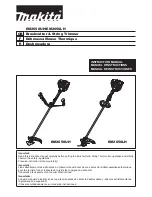
8. APPLICATIONS
S i n c e b o t h the v e r t i c a l and h o r i z o n t a l a x e s of the o s c i l l o s c o p e have been c a l i b r a t e d ,
the o s c i l l o s c o p e i s capable of not only d i s p l a y i n g waveforms but a l s o measuring v o l t a g e or
time q u a n t i t a t i v e l y . For t h e s e measurements, be s u r e to r o t a t e the V. VARI and H. VARI
c o n t r o l s f u l l y c l o c k w i s e to the CAL p o s i t i o n ( u n t i l a c l i c k sound i s h e a r d ) . We recommend
t h a t t h e probe ( i n c l u d e d i n t h e a c c e s s o r i e s ) be u s e d t o m i n i m i z e i n t e r f e r e n c e t o t h e
s i g n a l s you want to measure.
8 — 1
m e a s u r i n g W o l t a g e
B e t w e e n Two Po i n t s on a Waveform
Use t h e f o l l o w i n g p r o c e d u r e s f o r m e a s u r i n g v o l t a g e between two p o i n t s , peak t o peak
v o l t a g e , e t c .
1) A p p l y a s i g n a l to the INPUT t e r m i n a l , and a d j u s t the VOLTS/DIV and SWEEP TIME/DIV
c o n t r o l s . Reset the t r i g g e r point i f n e c e s s a r y .
Set the AC-GND-DC c o n t r o l to AC.
2) Use the y POSITION c o n t r o l so t h a t one of the p o i n t s to be measured f a l l s on one of
the h o r i z o n t a l g r a d u a t i o n l i n e s , w h i l e the other p o i n t can s t i l l be observed on the CRT
s c r e e n .
3) Use the POSITION c o n t r o l so t h a t the p o i n t to be measured f a l l s on the v e r t i c a l
s c a l e a t the c e n t e r of the CRT.
4 ) Measure t h e v e r t i c a l d i s t a n c e between the two p o i n t s . M u l t i p l y t h a t v a l u e by t h e
VOLTS/DIV s e t t i n g .
When t h e 10:1 probe i s used, a l s o m u l t i p l y the v a l u e by t h e a t t e n u a t i o n r a t e of the
probe.
34
















































